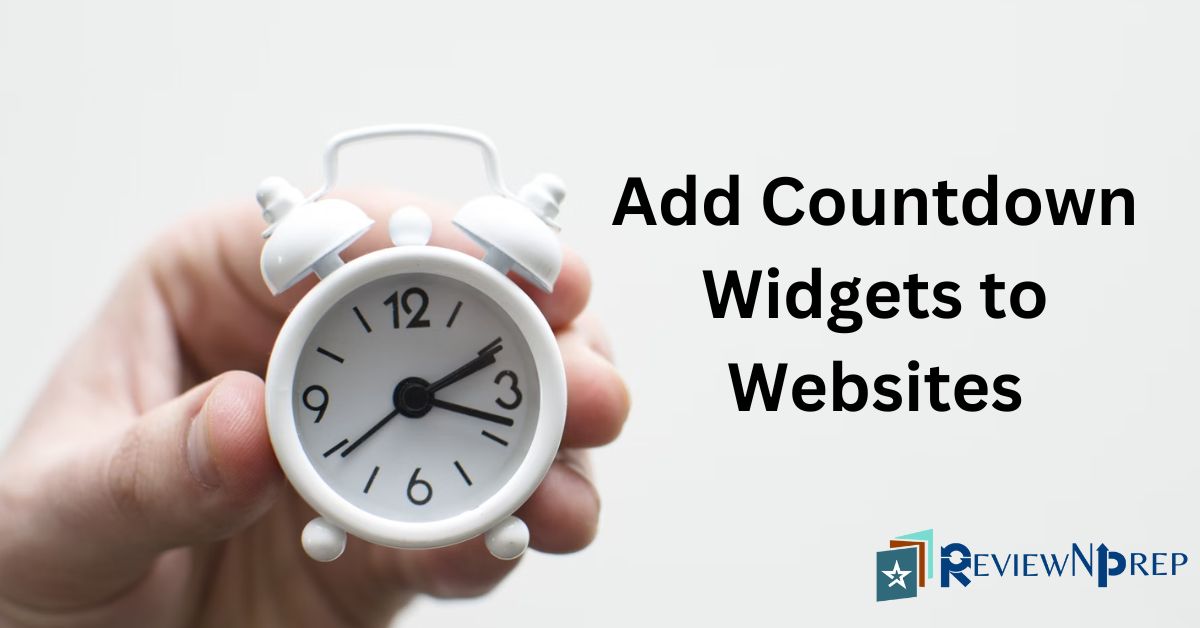|
|
Widgets on the site help solve various business tasks: collect data, increase conversions, inform visitors about promotions, etc. Countdown widgets, in particular, can create a sense of urgency and encourage customers to take action before a special offer or event expires.
In this article, we will analyze what countdown widgets are and how to create them and add them to the site. We will also explore some successful case studies to demonstrate the effectiveness of these widgets in boosting user engagement and sales.
What Is a Countdown Widget?
Countdown widgets for websites are active items on web pages that display a timer ticking down to a specified event or deadline. These widgets take many shapes, including clocks for limited-time deals, product debuts, registration deadlines, and even simple countdowns to holidays. Countdown widgets are designed to generate a sense of urgency and inspire visitors to take prompt action.
Moreover, countdown widgets serve as visual cues, grabbing visitors’ attention and directing them toward the impending event or deadline. By prominently displaying the time remaining, countdown widgets instill a fear of missing out (FOMO), prompting visitors to take desired actions promptly.
Benefits of Countdown Widgets
Implementing countdown widgets on websites offers several benefits that directly improve conversion rates and overall user engagement.
Increased Conversion Rates
Countdown widgets create a sense of urgency, compelling visitors to act quickly to avoid missing out on an opportunity. This urgency often translates into higher conversion rates as visitors are motivated to purchase or complete a desired action before time runs out.
Enhanced User Engagement
Interactive countdown clocks attract users’ interest and motivate them to stay on the page. Visitors who watch the countdown get more involved in the outcome, resulting in more interaction and time spent on the website.
Improved Sales and Revenue
Businesses can increase sales and income quickly by using countdown widgets to promote limited-time specials or flash sales. The urgency produced by the countdown timer encourages visitors to purchase sooner rather than later, leading to increased sales.
Fosters Decision-Making
Countdown widgets simplify visitors’ decision-making by presenting a clear deadline or event. When confronted with a countdown timer, visitors promptly make decisions, reducing indecision and abandonment rates.
Builds Anticipation and Excitement
The visual representation of time ticking away creates anticipation and excitement among visitors. Whether they are expecting a new product launch or the start of a limited-time promotion, countdown widgets keep users engaged until the desired event or deadline.
Supports Marketing Strategies
Countdown widgets complement several marketing techniques, such as email campaigns, social media promotions, and digital advertising. Implementing countdown clocks across numerous channels strengthens messaging and increases the efficacy of marketing campaigns.
Drives Traffic and Engagement
Featuring countdown widgets prominently on your website can attract additional traffic and engagement, especially when promoting time-sensitive events or offers. Visitors can share the countdown with their networks, increasing visibility and referral traffic.
Effective Use Cases of Countdown Widgets
Countdown widgets can be effectively utilized across various industries and cases to achieve specific goals and objectives. Here are some examples of how countdown widgets can be implemented:
- E-commerce websites. Display countdown timers for limited-time discounts, flash sales, or clearance events to urge visitors to purchase before the offer expires. Additionally, countdowns can be used to highlight shipping deadlines for guaranteed delivery before holidays.
- Event promotion. Countdown widgets are invaluable for promoting upcoming conferences, webinars, or product launches. By showing a countdown to the event date, organizers can create excitement and encourage early registrations or ticket purchases.
- Product launches. Generate anticipation and excitement around new product launches by featuring countdown timers on product pages. Countdown widgets can create a buzz and drive pre-orders or early adopter sales, maximizing the launch’s impact.
Best Practices for Implementing Countdown Widgets
To maximize the effectiveness of countdown widgets and ensure optimal results, consider the following best practices when implementing them on your website:
- Communicate the deadline. Verify the countdown timer communicates the deadline or event it is counting down to. Use descriptive text or accompanying visuals to convey the purpose and urgency effectively.
- Optimize placement and design. Strategically place the countdown widget in prominent locations on your website, such as the homepage, product pages, or checkout process. Choose a visually appealing design that aligns with your brand’s aesthetics and enhances user experience.
- Test and iterate. Continuously monitor the performance of your countdown widgets and experiment with different variations to optimize results. A/B testing can help determine the most effective countdown durations, designs, and placement strategies for your specific audience and objectives.
Conclusion
Countdown widgets for websites effectively increase conversions, improve user engagement, and maximize the impact of time-sensitive promotions and events. Companies using the ideas of urgency and anticipation can successfully persuade visitors to take desired actions and accomplish their conversion goals. Implement countdown widgets deliberately and strategically to maximize their effectiveness in increasing conversions and generating business success.
Further Reading:


Have questions or want to help the community? Share here.
We encourage our readers to share their unique experiences or ask questions to create a helpful and informative community. Our editors will also review every comment before publishing, ensuring our commitment to this community.